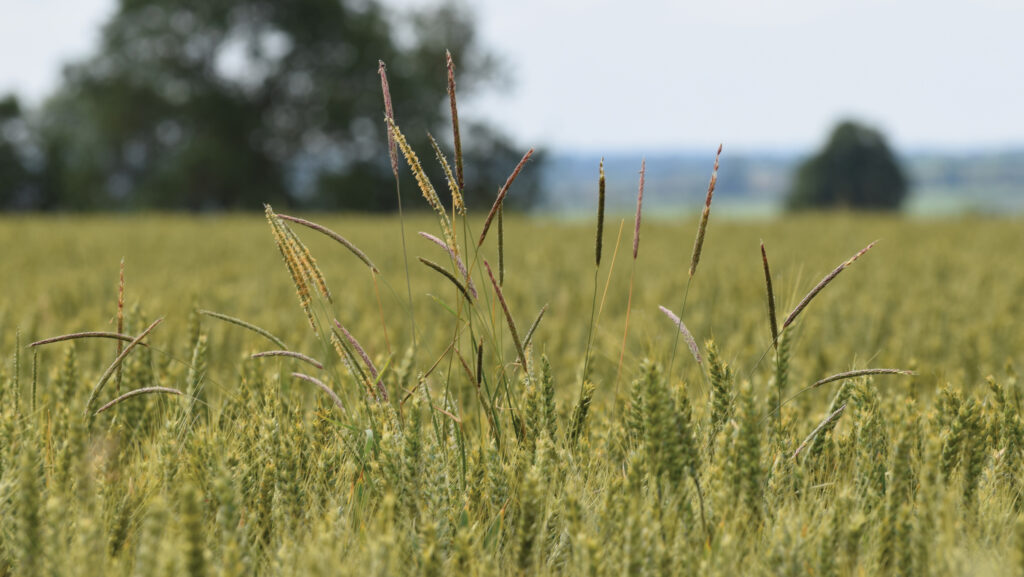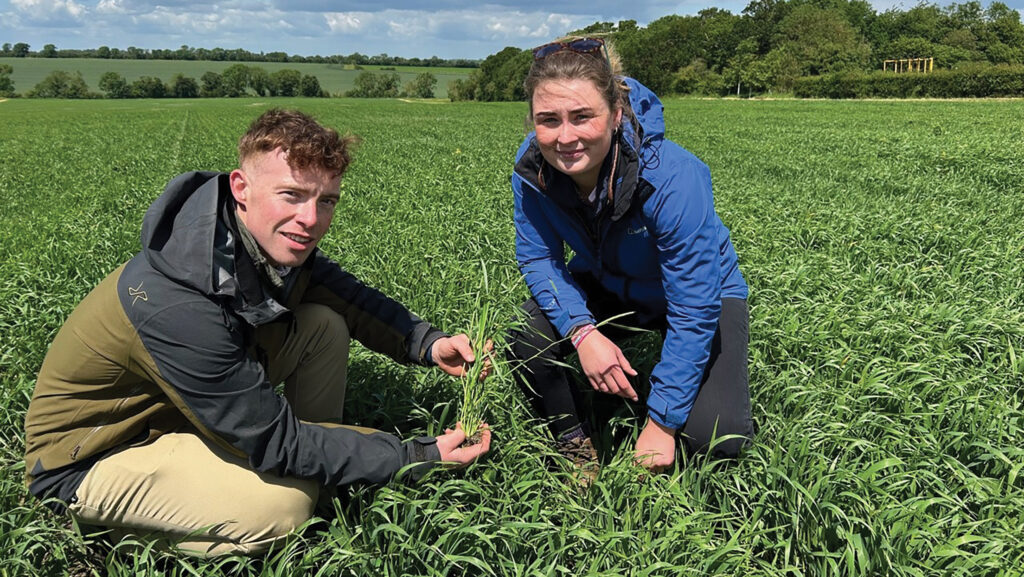Blackgrass control as later-germinating populations emerge
 © Hutchinsons
© Hutchinsons Blackgrass emergence patterns are shifting towards later-germinating populations, which are prompting growers and agronomists to adapt control strategies to keep on top of the weed.
Evidence is also suggesting that the tricky grassweed is becoming more vigorous and producing a greater number of tillers, explains Hutchinsons technical manager, Dick Neale.
“Stale seed-beds and delayed drilling have been very effective measures for reducing September and early October germinating blackgrass, but the weed is adapting to what we do, with a significant shift towards later-germinating blackgrass populations,” he says.
See also: Can delayed drilling be replaced in blackgrass control programmes?
Delaying drilling even later into the autumn to catch blackgrass emerging from late October onwards with stale seed-beds is an unlikely alternative, particularly on heavy land.
This raises the question of what can be done about it.
New trial site investigates
Agronomy group Hutchinsons has launched a new 40ha demonstration site in Cambourne, Cambridgeshire, to better understand these changes and how to tackle them.
The site has been kindly hosted by the Clear family at South Sea Farm, who have been making good progress in depleting September and early October-emerging blackgrass populations through the use of delayed drilling and stale seed-beds.
However, as the weed evolves to emerge later in the calendar year and in a more protracted manner, control has become more challenging.
This was highlighted during this season’s wet autumn, which prevented winter crop drilling on the farm’s heavy clay soils, leaving many areas unsown until the spring.
“This provided a useful insight into how blackgrass responds to different management practices. Normally, these areas would have gone under the drill by mid-October, but this season, they didn’t,” says Dick.
Various blackgrass control techniques were trialled before the weather broke last autumn, ranging from cultivations and cover crops, to no cover and volunteer management.
This showed that the bulk of blackgrass on the farm is germinating from 20 October onwards, not in September or early October, and is doing so in combination with additional cultivations.
Tom Smith, agronomist at Farmacy, says that individual blackgrass plants are noticeably more vigorous, with greater tillering capacity. In fact, some blackgrass at Cambourne is producing up to 40-50 tillers a plant.
This is about 50% greater than the average tiller number recorded a few years ago at the previous trial site (which lies a few miles away from the Cambourne site).
However, Tom notes that populations of individual plants were generally higher there. The average blackgrass population at Cambourne is 200-300 heads/sq m.
“Growers and agronomists need to understand the dynamics of their own blackgrass populations and tailor control strategies accordingly,” he says.
The team is looking at “whole-farm” solutions to combat the shift in blackgrass emergence.
This covers everything from cultivations, rotation, soil health, and cover cropping, to drilling dates and herbicide options.
Data from precision farming tool Omnia and soil mapping analysis from the firm’s TerraMap technology are also being used to inform the decision making process.

Tom Smith and Poppy Clark © Hutchinsons
Focus on drainage
Improving drainage is a top priority at the site, as the wet winter, together with TerraMap soil analysis, highlighted a number of issues exacerbating the blackgrass threat.
The priority now is to get water moving through the soil and remove identified wet patches.
“We’ve seen a number of springs pop up in some fields over the winter, and many areas have really struggled with drainage on the heavy clay soil, so will clearly benefit from mole draining this autumn,” notes Farmacy agronomist, Poppy Clark.
Soil analysis also revealed the silty clay soil on the farm is relatively high in magnesium, which is creating a tighter structure that can be hard to work and is likely to impair root growth and water infiltration.
To address this, one field received 3t/ha of gypsum (calcium sulphate) last autumn to counter the high magnesium content and rebalance the calcium/magnesium ratio.
The aim was to open the structure, and improve soil friability. It is an option the team will use again this autumn.
Other trial work is looking at the use of multispecies cover crops to improve soil structure by breaking up any tight or compacted layers and building organic matter to manage soil water and improve drainage.
Drilling early
The team will also investigate sowing winter wheat earlier during the first week of October to see if they can establish a competitive crop before the main flush of blackgrass emerges.
“Drilling earlier may be possible and is something many growers might be keen to do this year, but you need to understand the dynamics of blackgrass and observe what’s happening in each field on your farm to ascertain when most of the population is emerging,” says Tom.
“If it is a late-emerging population, stale seed-beds and delayed drilling may not be working for you any longer, and there may well be a place for drilling earlier and being more focused with residual choices and timings.”
For growers drilling earlier, he highlights the importance of a correctly timed, residual herbicide programme, featuring limited applications at drilling, but with the most robust input of chemistry in mid-October.
A pre-Christmas top-up should also be considered, and possibly again in the spring, to catch later-emerging populations.
Spring cropping
Following the difficulties establishing winter crops last autumn, most land at Cambourne was sown with spring barley this season, which has helped reduce blackgrass pressure.
This is partly because it allowed extra time for more blackgrass to emerge over the winter, before being sprayed off with glyphosate prior to drilling.
The team also trialled different management approaches within the spring barley, including the use of placement fertiliser at drilling, variations in seed rates and a companion crop of spring beans.
Crops that received placement fertiliser were quicker to establish, making them better able to outcompete blackgrass emerging with the barley.
Applying fertiliser with seed, rather than across the whole field, also reduced the likelihood of indirectly stimulating weed growth, which may have reduced blackgrass vigour.
The seed rate trial is revealing interesting results. Seed rates varied from 200kg/ha up to 275kg/ha, with higher rates offering greater competition against blackgrass.
For example, at the highest spring barley seed rate, an average blackgrass population of 4 plants/sq m and 3 tillers a plant was recorded, ranging from 1-6 tillers.
In contrast, the lowest seed rate saw an average of 20 plants/sq m and 16 tillers a plant, ranging from three to 20-plus.
“The majority of blackgrass was smaller, with fewer tillers at the higher seed rates, but we need to strike a balance,” says Tom.
“The spring barley was also more cramped at higher rates, resulting in smaller plants and fewer tillers, so we need to find where the optimum is for both blackgrass control and crop yield.”
More results from the trial site will be released at a meeting later this year, where there will be an opportunity to discuss further findings.
